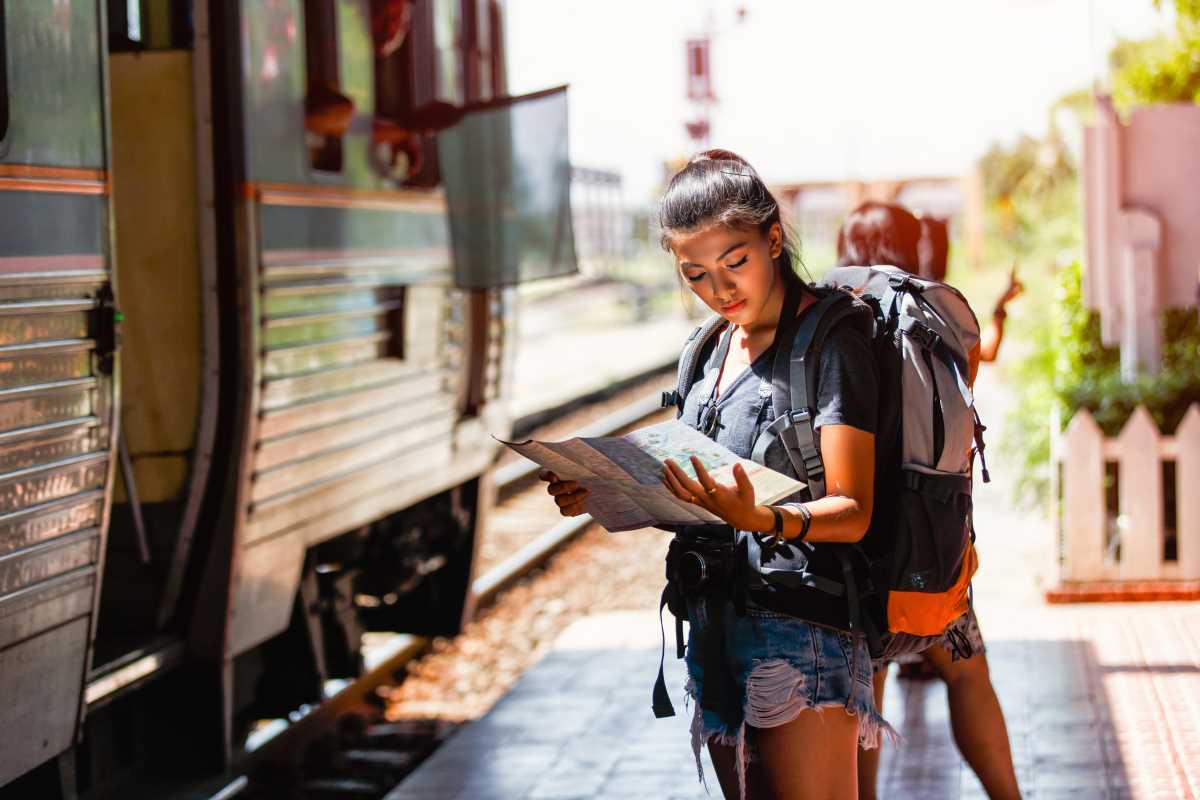Traveling abroad can be an enriching experience, but language barriers can sometimes pose a challenge. Whether you're ordering a meal, asking for directions, or simply trying to communicate with locals, breaking through language barriers abroad is essential for a smooth travel experience. Here are some effective strategies to help you navigate linguistic challenges while exploring new destinations.
Immerse Yourself in the Local Culture
One of the best ways to break through language barriers abroad is to immerse yourself in the local culture. Engaging with locals, participating in cultural activities, and trying local foods allows you to gain a better understanding of the language and build connections that can help you navigate communication challenges.
- Attend Local Events - Joining local events such as fairs, markets, or festivals can greatly enhance your understanding of the culture and language. For example, if you find yourself in Spain during a fiesta, participate in the celebrations. You'll get the chance to meet locals, learn about their traditions, and practice your language skills in a festive environment. This active participation fosters genuine interactions and allows you to pick up phrases and expressions used by native speakers.
- Try Cooking Classes - Taking a cooking class is another excellent way to immerse yourself in the local culture. Not only will you learn to prepare traditional dishes, but you'll also engage with the instructor and fellow participants in the local language. This hands-on experience can provide context for food-related vocabulary and allow for interaction in a relaxed setting, making it easier to practice speaking and listening.
Utilize Translation Apps
Translation apps make it easier than ever to bridge language gaps. Apps like Google Translate, Duolingo, and Babbel can help you translate text, speech, and even images in real-time, making it convenient to communicate with locals and understand important information while traveling. For instance, you can take a photo of a menu or sign and have the app translate it for you instantly. Additionally, many of these apps offer offline capabilities, ensuring you can access translation services even without a Wi-Fi connection.
- Explore Advanced Features - Some translation apps offer advanced features that can be especially useful for travelers. For example, Google Translate has a conversation mode, allowing you to have real-time translations during a dialogue with someone who speaks a different language. This feature can help you engage in conversations more fluidly, making it easier to connect with locals and express your thoughts and questions.
- Use Voice Recognition - Many translation apps now include voice recognition capabilities. You can speak into the app, and it will translate your words into the target language. This feature is incredibly helpful when you need to ask for directions or place an order. By practicing your pronunciation and listening to the app's translations, you can improve your language skills while also ensuring that your message is accurately conveyed.
Learn Basic Phrases
Learning a few basic phrases in the local language can go a long way in breaking through language barriers abroad. Simple greetings, thank you, please, and asking for directions are essential phrases that can help you communicate effectively and show respect for the local culture. Even if your pronunciation isn't perfect, locals often appreciate the effort and may be more willing to help you. Consider creating a small phrasebook or using flashcards to memorize key terms and expressions before your trip.
- Focus on Practical Vocabulary - When learning phrases, prioritize vocabulary that will be useful during your travels. Focus on practical expressions related to dining, shopping, transportation, and common social interactions. For example, learning how to say "Where is the restroom?" or "Can I have the bill, please?" can significantly enhance your ability to navigate everyday situations.
- Practice with Locals - If you have the opportunity, practice speaking with locals before your trip. Language exchange programs or meetups can connect you with native speakers who are interested in helping you improve your language skills. By practicing conversation with real people, you can gain confidence and receive feedback on your pronunciation and usage of phrases.
Use Non-Verbal Communication
When words fail, non-verbal communication can be a powerful tool to convey your message. Gestures, facial expressions, and body language can help you express yourself and understand others, even if you don't speak the same language. For example, pointing at objects, mimicking actions, or using drawings can clarify your intentions. Just be mindful of cultural differences; some gestures may have different meanings in various cultures, so it's essential to be aware and respectful to avoid misunderstandings.
- Understand Cultural Nuances - While non-verbal communication can be effective, it's crucial to understand the cultural context behind certain gestures. For instance, a thumbs-up may be seen as positive in some cultures, while in others, it can be offensive. Researching the local customs regarding non-verbal communication can help you avoid unintended faux pas and foster better interactions with locals.
- Combine Verbal and Non-Verbal Cues - When trying to communicate in a foreign language, combining verbal and non-verbal cues can enhance understanding. For example, if you're ordering food, you can point to a picture on the menu while saying the name of the dish. This multi-faceted approach makes it easier for the other person to grasp your meaning, increasing the chances of a successful interaction.
Seek Help from Locals or Tourists
Don't be afraid to ask for help when navigating language barriers abroad. Locals or fellow travelers who speak both languages can assist you in translating information, providing directions, or communicating with others. Establishing connections with people can not only help you break through language barriers but also enrich your travel experience. Local residents often have invaluable insights about the area, such as hidden gems or recommended restaurants, which can enhance your adventure.
- Connect with Fellow Travelers - Meeting other tourists can also provide an opportunity to share language skills. Consider practicing together if you encounter someone who speaks the language you're trying to learn. You can help each other with pronunciation, vocabulary, and even cultural insights. This collaborative approach makes learning more enjoyable and less intimidating.
- Use Community Resources - Many communities offer resources for tourists, such as visitor centers or language assistance hotlines. Don’t hesitate to reach out to these resources if you find yourself in need of help. They can provide information about local customs, transportation, and any language assistance available, making your experience smoother and more enjoyable.
Enroll in Language Classes
If you're planning an extended stay in a foreign country or frequent travel to a particular region, consider enrolling in language classes. Learning the local language can open doors to authentic cultural experiences, improve your communication skills, and enhance your overall travel experience. Many language schools offer online courses or immersive programs to accommodate different learning styles and schedules.
- Choose the Right Program - When selecting a language program, consider your goals and learning style. Some programs focus on conversational skills, while others emphasize grammar and vocabulary. Look for classes that offer a mix of speaking, listening, reading, and writing exercises to ensure a well-rounded understanding of the language.
- Engage with Classmates - Language classes provide an excellent opportunity to meet others who share your interests in travel and culture. Engaging with your classmates can lead to friendships and potential language exchange partnerships outside of class. Collaborating with peers enhances the learning experience and provides a supportive environment for practicing language skills.
Practice Patience and Understanding
Breaking through language barriers abroad may require patience and understanding. Remember that communication is a two-way street, and misunderstandings can happen in any language. Approach interactions with an open mind, a positive attitude, and a willingness to learn from each encounter. Embracing the challenges of language barriers can lead to memorable moments and meaningful connections during your travels. If you find yourself in a frustrating situation, take a deep breath and remind yourself that these experiences are part of the journey.
- Acknowledge Cultural Differences - Cultural differences can impact communication styles, so be open to varying ways of interacting. Some cultures may value direct communication, while others may prioritize indirect approaches. Being aware of these differences can help you navigate conversations more effectively and foster mutual respect.
- Learn from Mistakes - When you make a mistake or encounter a misunderstanding, use it as a learning opportunity rather than a setback. Reflect on what went wrong and how you can improve in the future. This growth mindset not only enhances your language skills but also contributes to your overall development as a traveler.
Embrace Cultural Exchange
Engaging in cultural exchange can also help bridge language barriers. This involves sharing aspects of your culture while learning about the local culture in return. Consider hosting a small gathering where you can share your language and customs with locals, or participate in community events where cultural exchange is encouraged. This not only fosters understanding but also allows for a deeper appreciation of both cultures, creating a sense of unity despite language differences.
- Share Your Experiences - When interacting with locals, don’t hesitate to share your travel experiences and the customs from your home country. This exchange of stories can lead to meaningful conversations and mutual understanding. Locals often enjoy hearing about visitors' cultures, and discussing differences can provide valuable insights for both parties.
- Participate in Community Initiatives - Joining community initiatives, such as cultural festivals or workshops, allows for an immersive experience that promotes cultural exchange. These events often encourage interaction between locals and visitors, creating a welcoming environment for language practice and cultural learning. Engaging in these initiatives can enrich your travel experience and help foster lasting connections.
Use Visual Aids
When language fails, visual aids can come to the rescue. Carrying a small notebook where you can draw, sketch, or write down words can help you communicate effectively. You might draw a simple picture to convey your needs or write down the words you struggle with to show locals what you mean. This method can be especially useful in areas where technology might not be accessible or when dealing with situations requiring detailed explanations.
- Create a Visual Dictionary - Consider creating a visual dictionary of common words and phrases related to your travels. Include illustrations or pictures alongside the words, making it easier for you to recall and communicate when necessary. This personal reference can be handy during your trip and add a creative element to your language-learning journey.
- Use Maps and Guides - When lost or confused, using maps or guides can be invaluable. Pointing to specific locations or landmarks can help you convey your intentions without relying solely on language. Many maps also include local language translations, which can facilitate better understanding when communicating with locals.
By overcoming language barriers, you can enrich your travel experiences and deepen your connection with different cultures. Embrace language learning and open communication to make your journeys more rewarding and insightful.
 (Image via
(Image via





